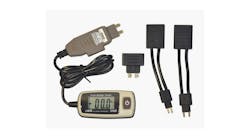The name of the game for any vehicle maintenance, repair or collision shop is maximum efficiency, productivity and safety. An investment in the appropriate vehicle lifts, along with regular routine lift inspection and preventive maintenance, can help with achieving these objectives.
Also vital is training technicians on how to properly use vehicle lifts. These can be one of the most dangerous pieces of equipment they use, if not operated – and maintained – properly.
This special Lift Supplement is intended to be a resource of knowledge on vehicle lifts, covering a range of topics. These include an overview of the various lift designs, inspection and maintenance requirements to ensure safety, and operator training.
Purchase Considerations
When looking to acquire a vehicle lift, there are a number of chief factors to think about. Among them:
- Shop environment – Floor surface, ceiling height, height of the tallest vehicle that will be serviced, power availability, access to the designated work area, space availability, position in the shop, etc.
- Tasks – Will the lift best suit the application? Can it properly handle the vehicles to be serviced? Lifting capacity, method of engagement, service job to be performed, etc.
- Type of lift – Fixed, mobile, plugged in or battery powered.
- Budget – Are you getting the best ROI? Along with purchase price and quality, lift maintenance and operational costs need to be taken into consideration as well.
Lift Certification
Lift certification is a must for safety's sake. State and local building codes in every U.S. state, plus Washington, D.C., now require that all installed vehicle lifts be certified to meet ANSI (American National Standards Institute) safety standards. These standards are the recognized standard governing the design, construction, testing and validation of automotive lifts.
A lift that meets these standards has a gold label from the Automotive Lift Institute (ALI). ALI is an independent certification organization providing safety and testing for the auto lift industry in the U.S. and North America.
Be advised: There are no legal requirements that lifts sold in the U.S. be certified to meet the standards, regardless of where the lifts are manufactured. Certification is voluntary. Therefore, responsibility for buying and installing certified vehicle lifts rests with the customer.
Operator Training
Training those who will be operating vehicle lifts is essential because regardless of how advanced the lift is, its operation is defined by a user. While every lift comes with an operator’s manual and additional lifting safety handbooks, there are shops that tend to disregard this information and start using the equipment without being aware of proper safety procedures.
Lift accidents happen. Industry data reveals that some 90 percent of accidents are caused by operator error. Proper training helps ensure safe and efficient operation. Plus, it prepares the user for an emergency situation.
Technicians should be trained to inspect the lift daily for cracks, damage or wear. If defects are noted during the inspection, the technician should stop using the equipment and notify a supervisor.
Remind technicians to always maintain a constant awareness of the many hazards involved with lifting vehicles.
Inspect and Maintain
Proper routine inspection and maintenance is essential to maximize the safe operation, reliability and life of a lift. A best practice is to adopt the OEM guidelines/recommendations. The lift manufacturer or their field representatives can be contacted for additional information and guidance.
A record of each periodic inspection needs to be prepared and maintained, noting the observations and findings of all points of inspection recommended by the lift OEM, as well as subsequent repairs or replacements accomplished.
At a minimum, lifts must have an annual inspection by a qualified lift inspector. ALI has a third-party vehicle lift inspector certification program wherein these inspectors are proven qualified to inspect every lift, from light to heavy duty models.
Only qualified contractors should be used to make all repairs. Replacement lift parts must be the OEM’s parts to maintain ALI certification.
Accessories
There are a wide range of accessories that can make a good lift even better by helping to maximize performance and minimize downtime. Accessories include lighting for runway lifts, rolling jacks, truck adapters and special lifting pads.
Lift accessories must be certified to maintain ALI lift certification. Using an uncertified option or accessory on a certified lift will void the lift’s certification and could put the user’s safety and lift performance at risk.

